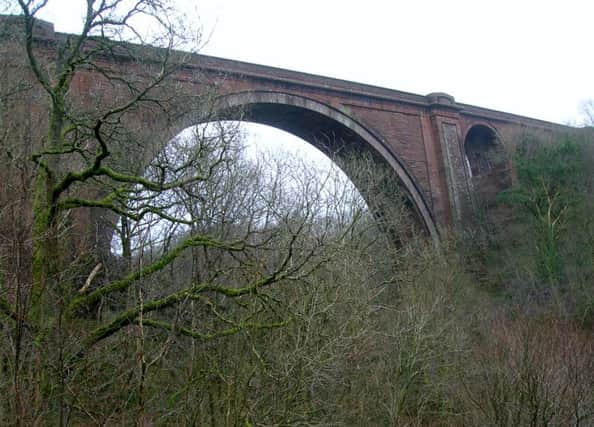Scottish fact of the day: Ballochmyle Viaduct


Recently designated a National Historic Civil Engineering Landmark, it featured in the 1996 film Mission Impossible, as Tom Cruise was seen on top of a train battling Jean Reno in a helicopter.
The Ayrshire viaduct, which crosses the River Ayr between Mauchline and Catrine on the Glasgow-Dumfries line, boasts the largest masonry arch in the UK, with a span of 181ft.
Advertisement
Hide AdCompleted in March 1848, it was designed by local engineer John Miller, often described as ‘Scotland’s Brunel’, after the Portsmouth-born engineer Isambard Kingdom Brunel.
Despite the speedy construction of the viaduct - building had started in 1846 - the railway itself was not completed until 1850.
Relatively little is known about Miller, who formed one half of the Grainger and Miller firm along with Thomas Grainger and designed his first railway at the tender age of 21.
Born in Ayr in July 1805, Miller, aged 20, went into partnership with Grainger in 1825, and took the lead role in surveying the Edinburgh and Glasgow Railway.
He was responsible for designing a great many viaducts, including the Woodroad Viaduct as well as Ballochmyle, and evened out the hilly terrain of the Edinburgh-Glasgow line with deep cuttings, tunnels, viaducts and high embankments.
He also built the main Edinburgh-Glasgow line, as well as the route between Edinburgh and Berwick-upon-Tweed - the first cross-Border rail link - and the Edinburgh-Hawick section of the Waverley line to Carlisle.
Advertisement
Hide AdMiller was also responsible for the construction of Granton Harbour, despite his focus on rail, and trained Benjamin Blyth - the engineer whose firm B & E Blyth carried out work for the Caledonian, Glasgow and South Western, Scottish Central, Dundee and Perth, Great North of Scotland and Portpatrick railway companies.
Political career
Shortly after the completion of the Ballochmyle Viaduct, Miller retired from engineering, and unsuccessfully contested the Stirling Burghs at the 1852 General Election as a Liberal Party politician, before losing out again in Edinburgh at the General Election in 1865.
Advertisement
Hide AdHe was elected unopposed as one of two MPs for Edinburgh in 1868, but lost his seat to James Cowan - another Liberal candidate - in the 1874 election.
He died on May 8, 1883, in Edinburgh, and is buried in the north-east section of Dean Cemetery, near Stockbridge.
Posthumous honours
In July 2005 Miller was honoured with a plaque at Haymarket Station, on the 200th anniversary of his birth, with a memorial being unveiled in Ayr in 2012.
In 2014, a further plaque to Miller and his work was unveiled by Geoff French, president of the Institute of Chartered Engineers (ICE), and East Ayrshire Provost Jim Todd.